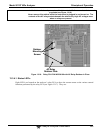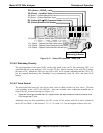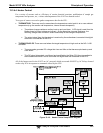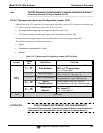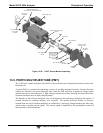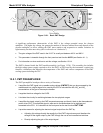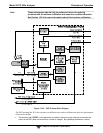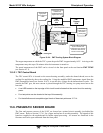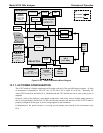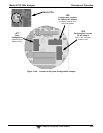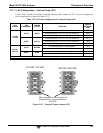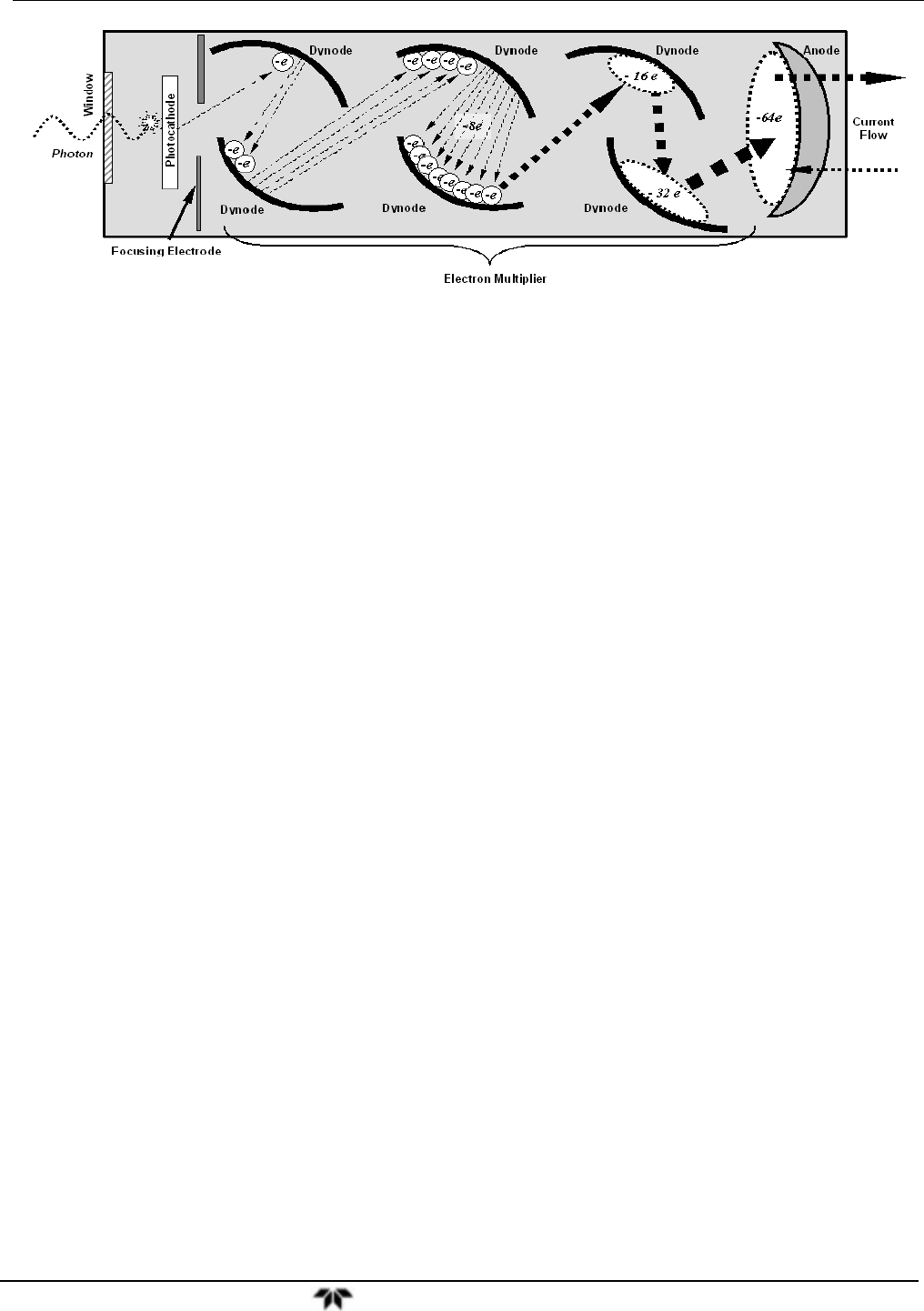
Model 9110T NOx Analyzer Principles of Operation
Teledyne Analytical Instruments 353
Figure 13-21: Basic PMT Design
A significant performance characteristic of the PMT is the voltage potential across the electron
multiplier. The higher the voltage, the greater the number of electrons emitted from each dynode of the
electron multiplier, in effect, making the PMT more sensitive and responsive to smaller variations in
light intensity but also more noisy (this is referred to as “dark noise”).
The gain voltage of the PMT used in the 9110T is usually set between 400 V and 800 V.
This parameter is viewable through the front panel as test function HVPS (see Section 4.1.1).
For information on when and how to set this voltage, see Section 12.8.4.
The PMT is housed inside the PMT module assembly (see Figure 13-20). This assembly also includes
the high voltage power supply required to drive the PMT, an LED used by the instrument’s optical test
function, a thermistor that measures the temperature of the PMT and various components of the PMT
cooling system including the TEC.
13.5.1. PMT PREAMPLIFIER
The PMT preamplifier board provides a variety of functions:
It amplifies the PMT signal into a useable analog voltage (PMTDET) that can be processed by the
motherboard into a digital signal to be used by the CPU to calculate the NO, NO
2
and NO
x
concentrations of the gas in the sample chamber.
It supplies the drive voltage for the HVPS.
It includes the circuitry for switching between the two physical ranges.
It amplifies the signal output by the PMT temperature sensor and feeds it back to the thermoelectric
cooler driver PCA. This amplified signal is also sent to the Motherboard to be digitized and
forwarded to the CPU. It is viewable via the front panel as the test function PMT TEMP.
It provides means for adjusting the electronic signal output from the PMT by:
Adjusting this voltage directly the sensitivity of the PMT’s dynode array and therefore the
strength of the signal output by the PMT through the use of two hexadecimal switches.
Directly adjusting the gain of the output signal.




